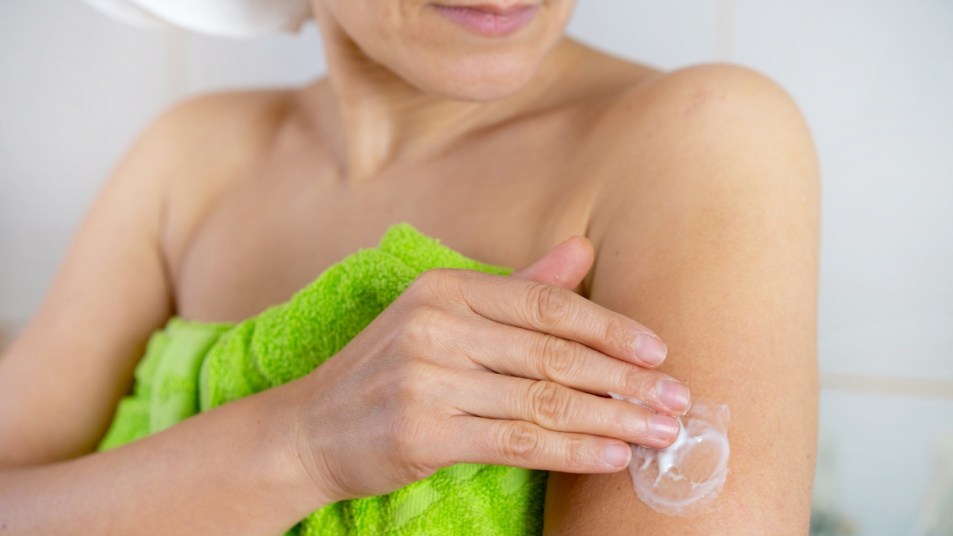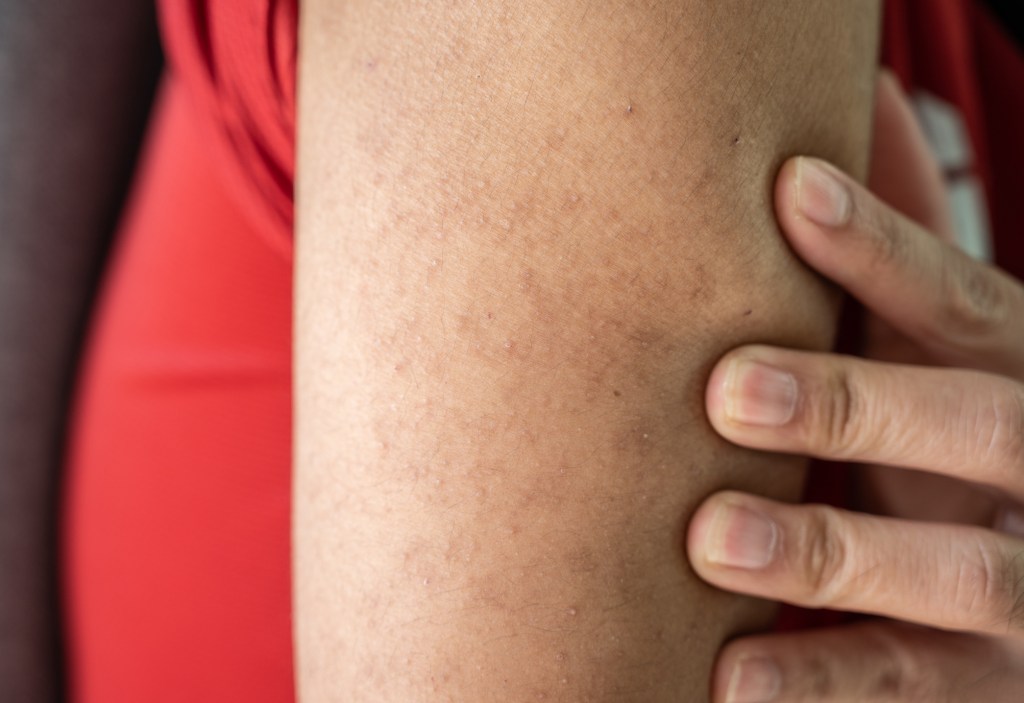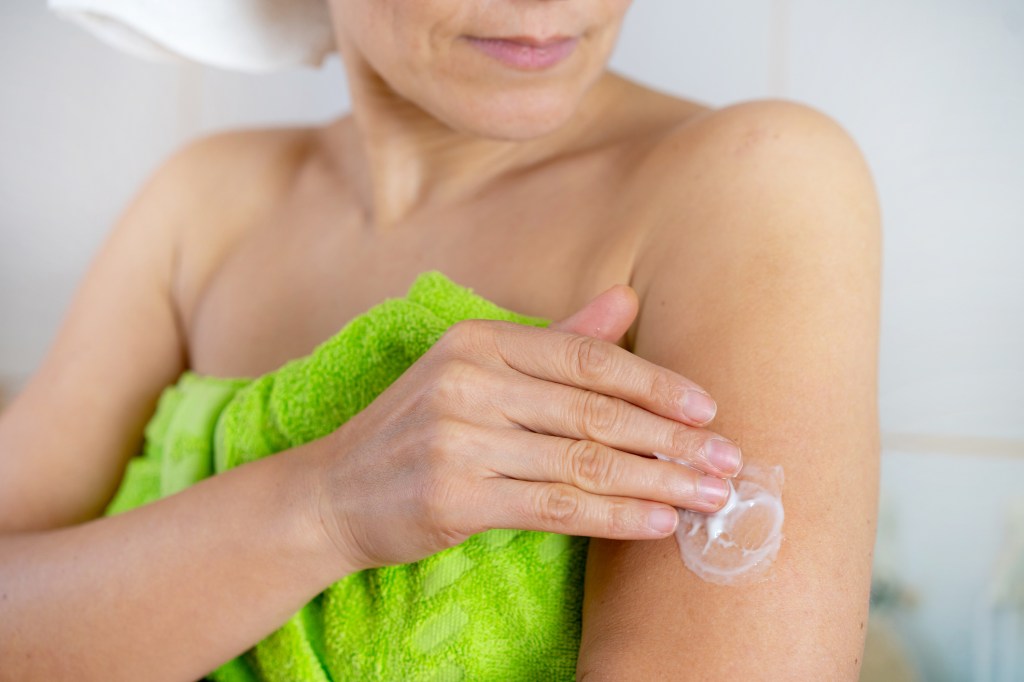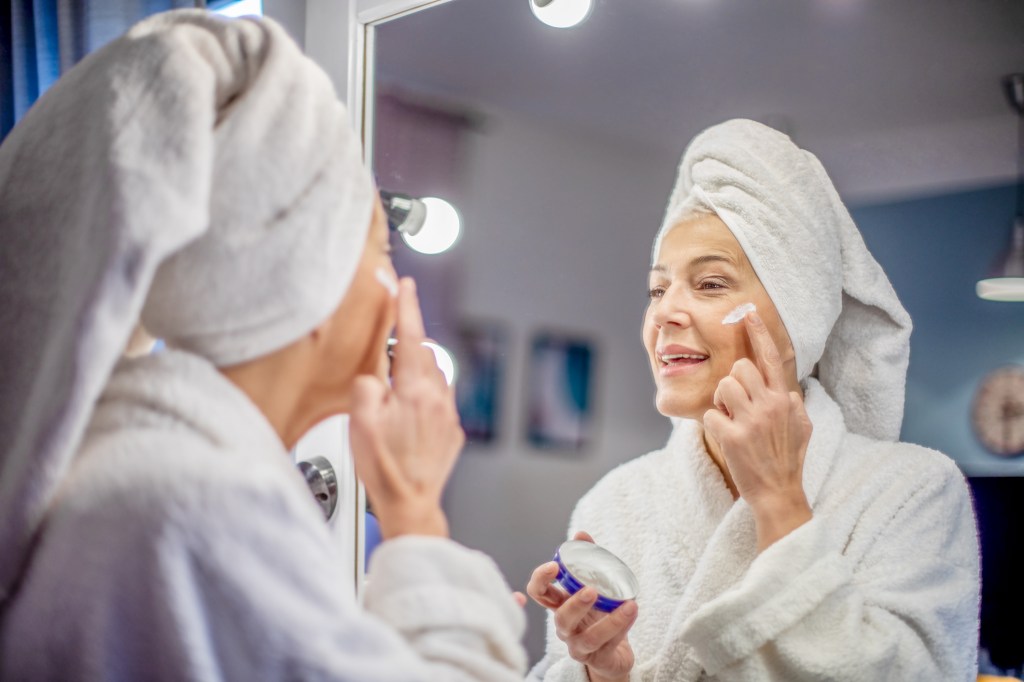Skincare Pros Reveal How to Get Rid of Keratosis Pilaris for Smooth, Bump-Free Skin
Plus the drugstore finds that scrub it away fast

It’s important to love the skin you’re in. However, if you’re feeling a little self-conscious about the little dots and raised bumps on your arms that can feel like sandpaper — known as keratosis pilaris (KP), or “chicken skin” — we’ve got you covered. We asked skin experts how to get rid of keratosis pilaris, and while they say there’s no direct cure, there’s a plethora of high-quality products on the market that can help reduce its appearance. Read on to learn why you have it and the expert-recommended ways to relax those circular bumps for silky, smooth skin.
What is keratosis pilaris?

“KP is a skin condition that occurs when the skin produces too much keratin and the hair follicle becomes impacted and inflamed,” explains Rachel Lee Lozina, a Licensed Esthetician and Founder of Blue Water Spa in Oyster Bay, NY. “It can look like acne, but it’s not.”
According to Lozina, KP’s fairly common, and hereditary, so if you have it, chances are someone else in your family has/had it too. Commonly affected areas are the upper arms and thighs, “but it can also occur on your cheeks, chest, back, abdomen and/or buttocks,” says Charisse McCall, DO, a board-certified dermatologist and founder of Gold Coast Dermatology in Commack, New York. “It’s often asymptomatic, but can sometimes be itchy or red.”
How to get rid of keratosis pilaris on your body
The condition may not be curable, but there are things you can do to relieve it as well as reduce it.
1. Avoid hot showers
Since KP is a chronic condition, it’s important to maintain a good skin care routine year-round “in order to keep it at bay,” says Dr. McCall. And Lozina agrees, and points out that if left untreated, KP can actually make your skin feel rough, like sandpaper. Also, if you have KP, you might want to avoid hot baths and showers.
“Hot water can make KP more noticeable because it’s an inflamed follicle. So, heat from the hot water can exacerbate the appearance of KP, resulting in redness, dryness and irritation.” Instead, Lozina says, opt for lukewarm showers, and “if you do like really hot water, just reduce your time in the shower.”
2. Exfoliate and hydrate

If you’re having a KP flare-up, you may be inclined to cover it up with a thick concealer, but that’s not ideal. “It’s difficult to disguise KP with makeup because the bumpy texture often shows through,” says Dr. McCall. “Instead, the key is to eliminate it through exfoliation.”
How to get rid of keratosis pilaris through exfolitaion? There are two types of exfoliants: physical and chemical. Physical exfoliation, explains Dr. McCall, is achieved by mechanical rubbing against the skin, such as with an exfoliating sponge, glove or sugar scrub. And chemical exfoliation is when medicated ingredients cause a chemical reaction, which, in turn, causes the dead layers of your skin to turn over faster. “These types of ingredients include ammonium lactate, urea, glycolic acid (AHA) and salicylic acid (BHA).”
To keep the KP bumps calm, Dr. McCall recommends using a combination of both physical and chemical exfoliants. “However, it’s important not to overuse these potent ingredients,” she stresses. “Over-scrubbing, or using too many active ingredients at once, can breakdown your natural skin barrier, leading to irritation, itching, discomfort, redness, sun sensitivity, dry skin and/or peeling.” Dr. McCall recommends physical exfoliation with a scrub no more than one to two times weekly.
But lotions or creams with chemical exfoliants can be used daily, says Dr. McCall. “I like Eucerin Advanced Repair Cream because it contains the exfoliating ingredients urea and lactic acid, as well as barrier repairing ingredients such as shea butter, lipids and ceramides.
If you have sensitive skin, Dr. McCall recommends Dove Crushed Macadamia & Rice Milk Exfoliating Body Scrub. Another popular choice on the market is AmLactin KP Bumps Be Gone Hydrating Cream with 15% Lactic Acid, which is super moisturizing, non-greasy and fragrance-free.
Board-certified dermatologist Richard Bottiglione, MD, based in Phoenix, Arziona, recommends Dermatologist’s Choice Ultra Anti-Aging Cream to help smooth your bumpy skin. Just note: If the Ultra Anti-Aging Cream (or other creams/lotions) aren’t effective, “you may want to consult with your dermatologist about using a prescription like Retin-A or Accutane which may also help for those who have KP more severely.”
How to get rid of keratosis pilaris on your face

Now, when it comes to KP, your face care routine differs slightly from the rest of your body. Dr. McCall says to use topical retinoids such as adapalene 0.1% gel. She likes Differin Gel or La Roche Posay Effaclar Gel. “When applying these to the face, consider starting every other day to make sure your skin can tolerate it. I recommend using only a pea-sized amount per body area, rubbing in evenly (being careful to avoid the eyes, lips and neck), and then applying a hydrating moisturizer on top.” Her moisturizer favorites include CeraVe AM and PM facial lotions.
Here are the face prep steps to help get rid of keratosis pilaris:
- Cleanse skin.
- Exfoliate once or twice weekly.
- Gently moisturize.
- Apply sunscreen.
And at nighttime, follow this order:
- Cleanse skin.
- Apply your topical retinoid (a pea-sized amount).
- Add moisturizer (gentle).
“Your skin will likely go through an adaptation period during which you should expect to experience some redness, irritation, flaking and sometimes peeling,” explains Dr. McCall. “This is supposed to happen and will stop in time. Once your skin gets used to the medication, you may increase to three times weekly and eventually every night.”
And remember, says Dr. McCall, in the morning, don’t leave home without an SPF. “It’s important to wear a broad-spectrum SPF 30+ or higher daily to sun-exposed areas, with reapplication every two hours when outdoors.”
“This is a good standard practice for skin cancer prevention and anti-aging, but is extra important for those using AHA or retinoid-containing products, as they make you more prone to sunburn.”
For more on skin care, click through these stories:
Dry Brushing Your Skin Fights Cellulite & Leaves You Glowing: How to Get the Perks
8 Best Moisturizers for Rosacea-Prone Skin, According to Dermatologists
The 9 Best Makeup Products for Rosacea to Avoid Further Irritation and Inflammation












